Spatial awareness Normal Geometry Worksheets for Ages 3-9
9 filtered results
-
From - To
Enhance your child's spatial awareness with our engaging Normal Geometry Worksheets designed for ages 3-9. These worksheets provide a fun and interactive way for young learners to explore shapes, patterns, and spatial relationships. By completing various activities, children will develop essential skills in visual perception and problem-solving while gaining confidence in their understanding of geometry. Ideal for early education settings or home learning, our worksheets align with developmental milestones to ensure a comprehensive learning experience. Download our expertly crafted resources today and watch your child's spatial awareness skills flourish! Perfect for both teachers and parents seeking quality educational materials.
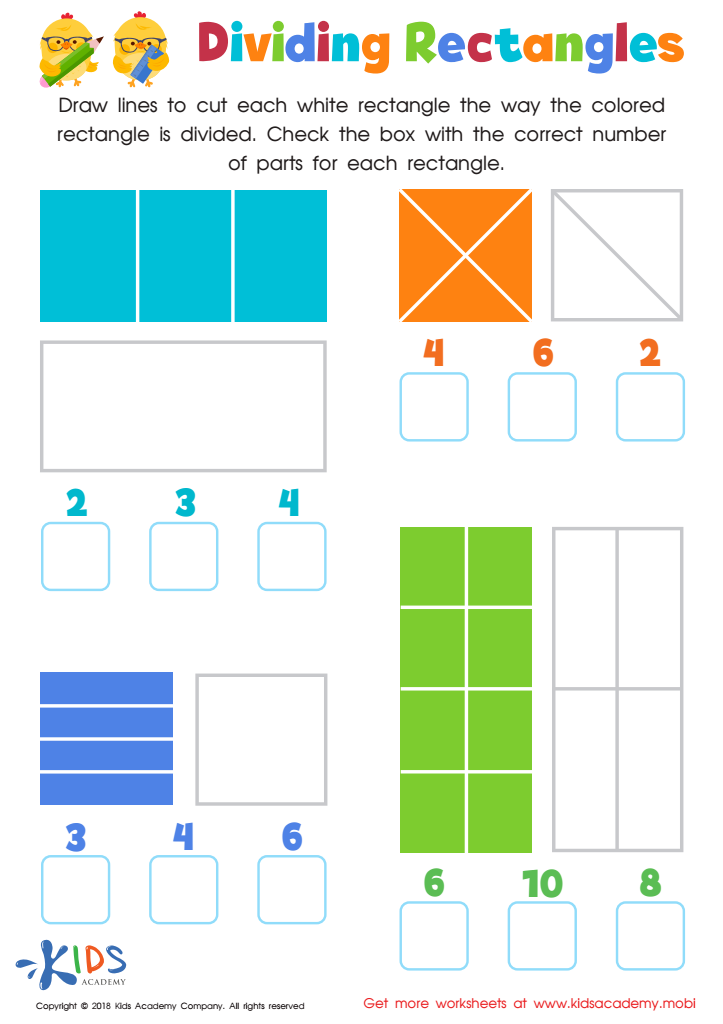

Dividing Rectangles Worksheet
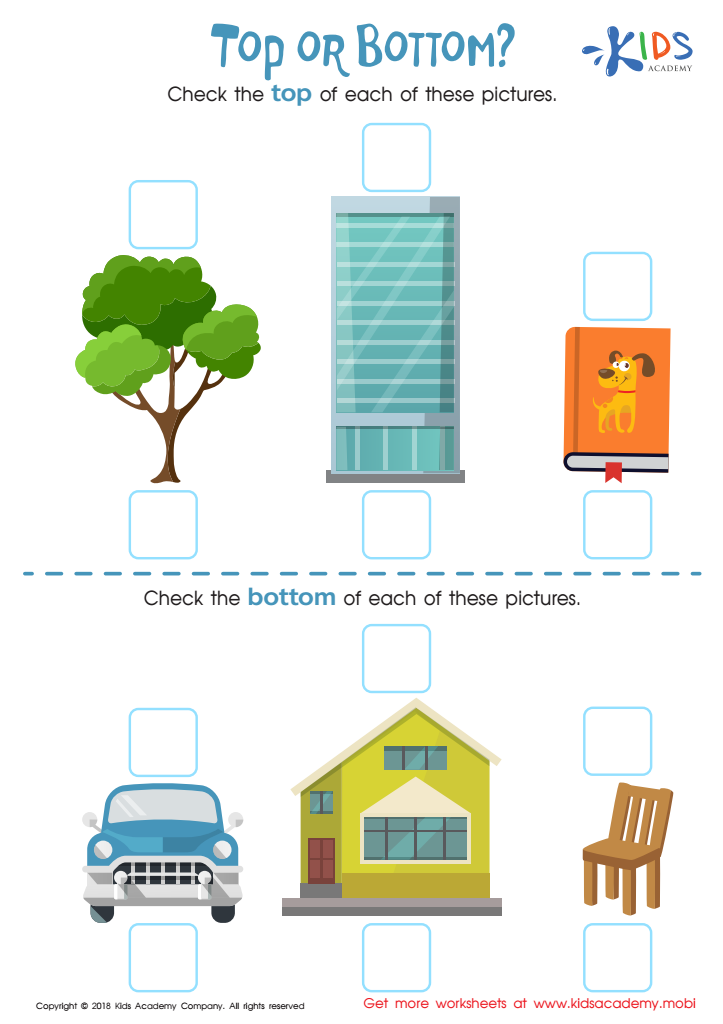

Top or Bottom Worksheet
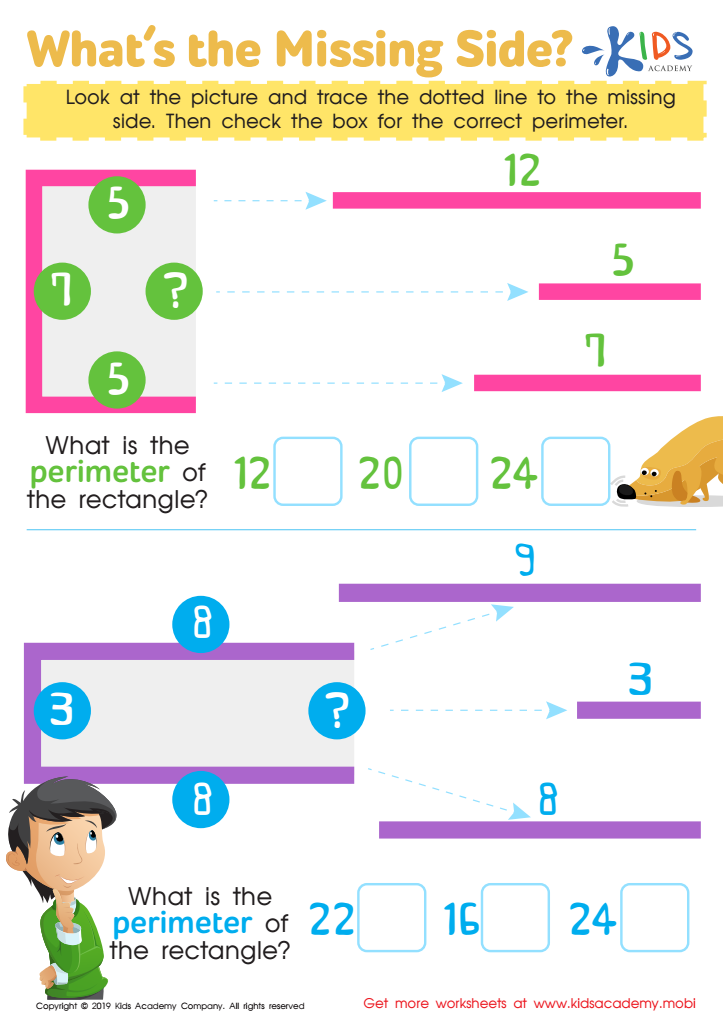

What's the Missing Side Worksheet
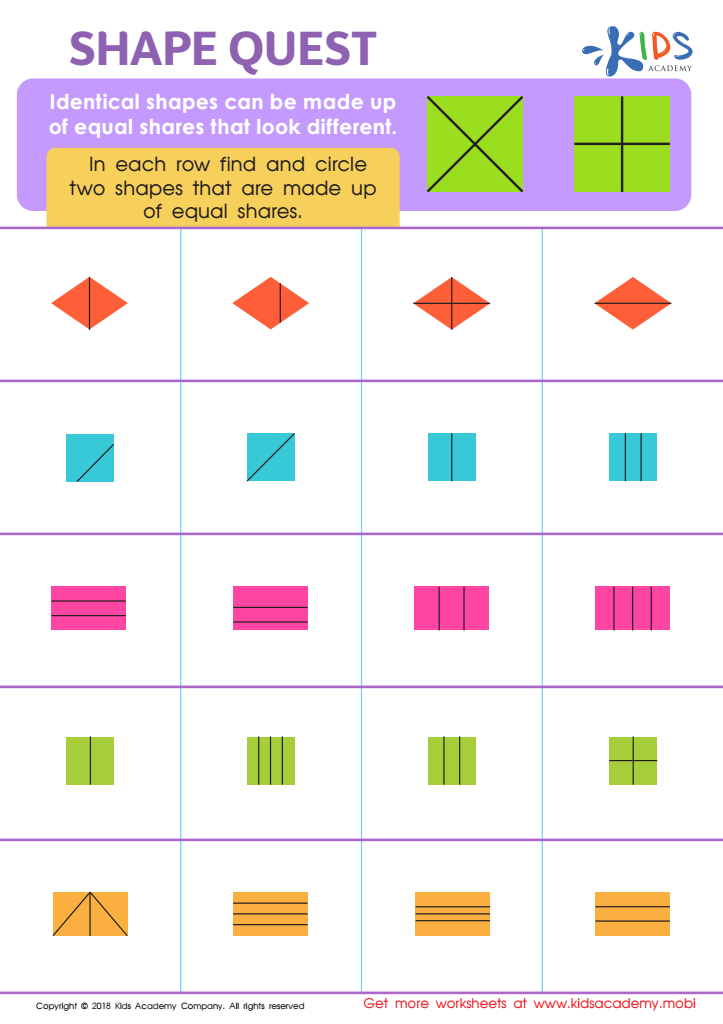

Shape Quest Worksheet
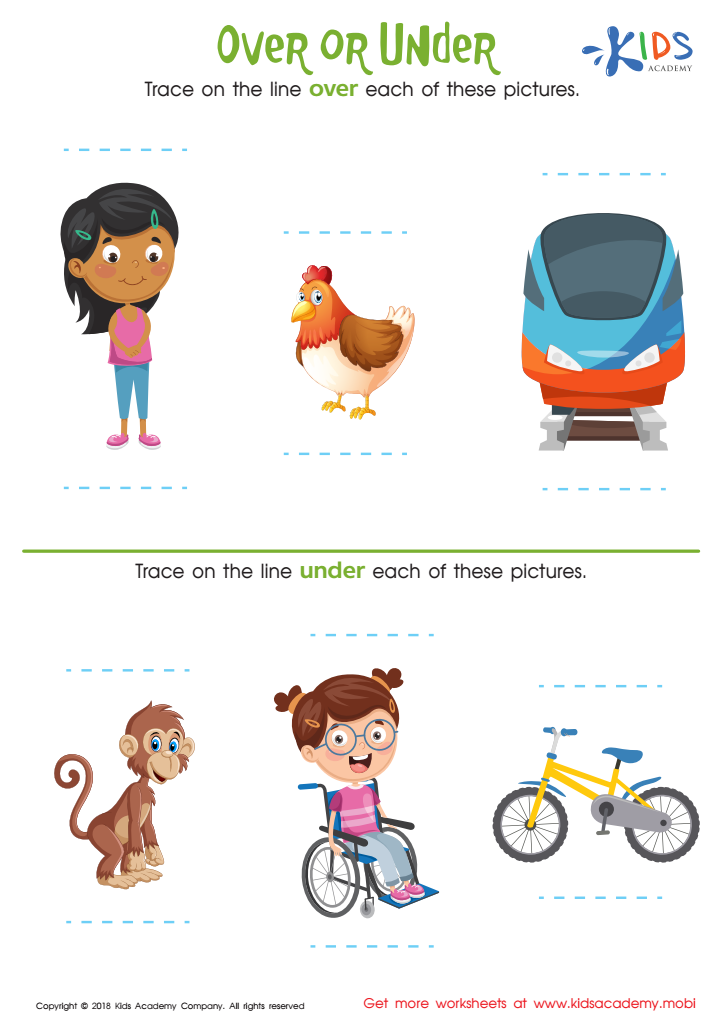

Over or Under Worksheet


Three–Dimensional Shapes: Cylinder Worksheet


In Front or Behind Worksheet
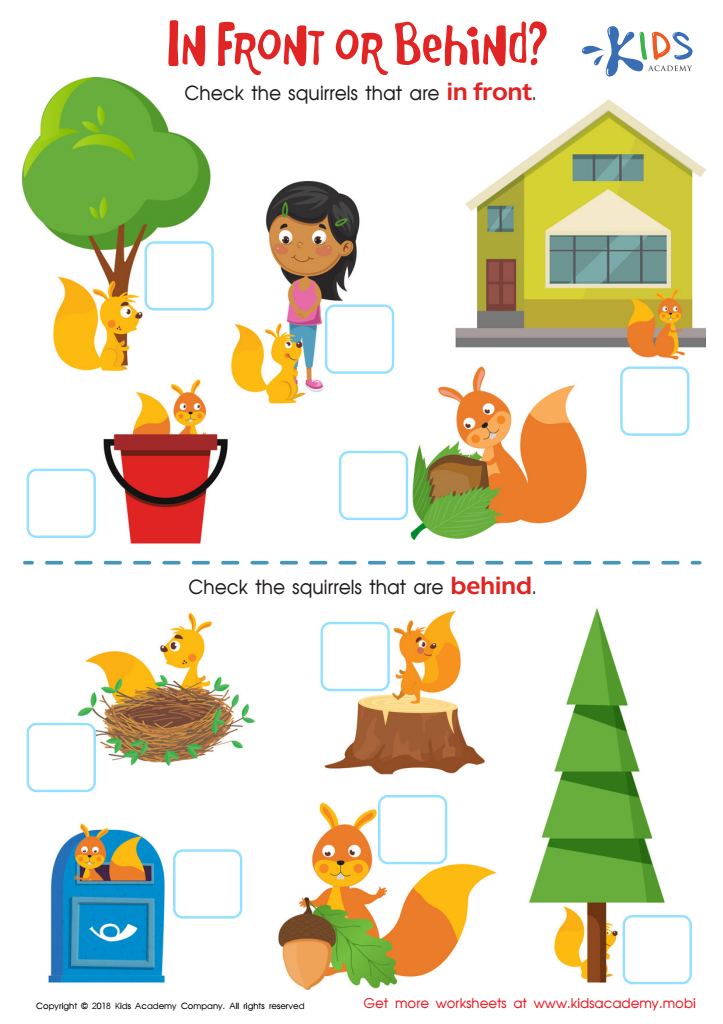

In Front or Behind: Part 2 Worksheet
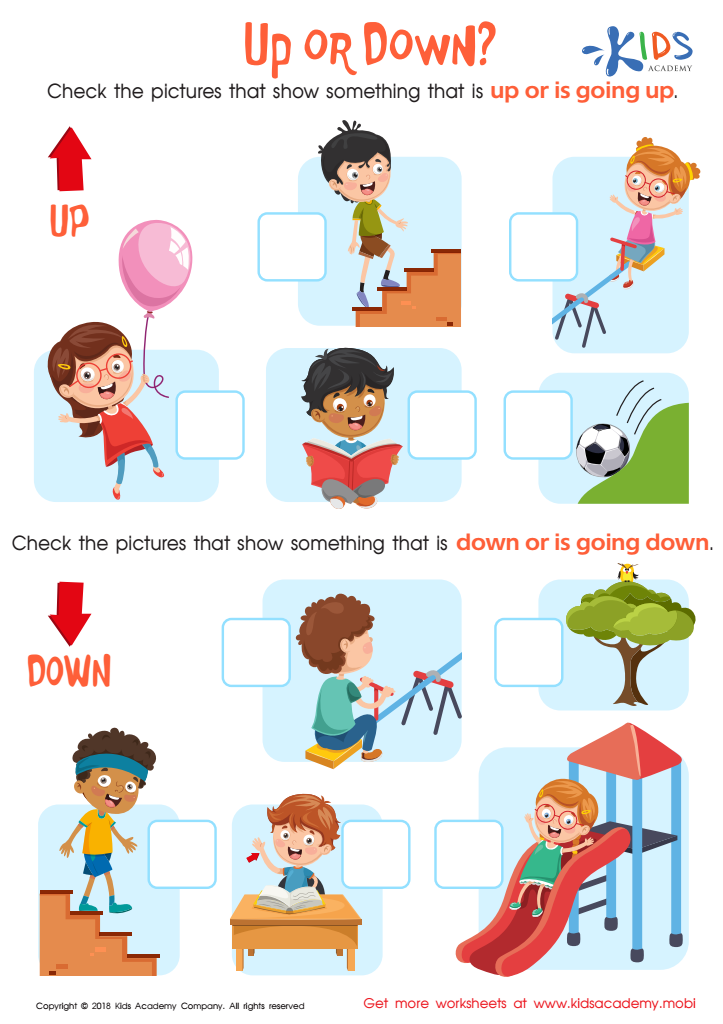

Up or Down Worksheet
Spatial awareness and fundamental geometry are crucial components of early childhood education for children aged 3-9. These skills form the foundation for critical thinking, problem-solving, and many aspects of everyday life. Understanding spatial relationships helps children navigate their environment, develop motor skills, and enhance their ability to comprehend movements, such as shifting or rotating objects.
Moreover, early exposure to spatial concepts significantly influences mathematical abilities later in life. Children with strong spatial awareness often excel in subjects such as geometry, measurement, and even advanced mathematics, where these skills play a pivotal role. When children can visualize shapes, sizes, and their positions in space, they become better equipped to handle more complex mathematical concepts as they grow.
Parents and teachers also benefit from fostering spatial awareness in children. Language development is enhanced as they learn to describe and discuss spatial relationships. Additionally, cooperative play and teamwork during activities that require spatial reasoning promote social skills.
Ultimately, investing time and resources into teaching spatial awareness and foundational geometry not only supports children's cognitive and academic growth but also prepares them for future success in various fields, including science, technology, engineering, and mathematics (STEM).
 Assign to My Students
Assign to My Students


























